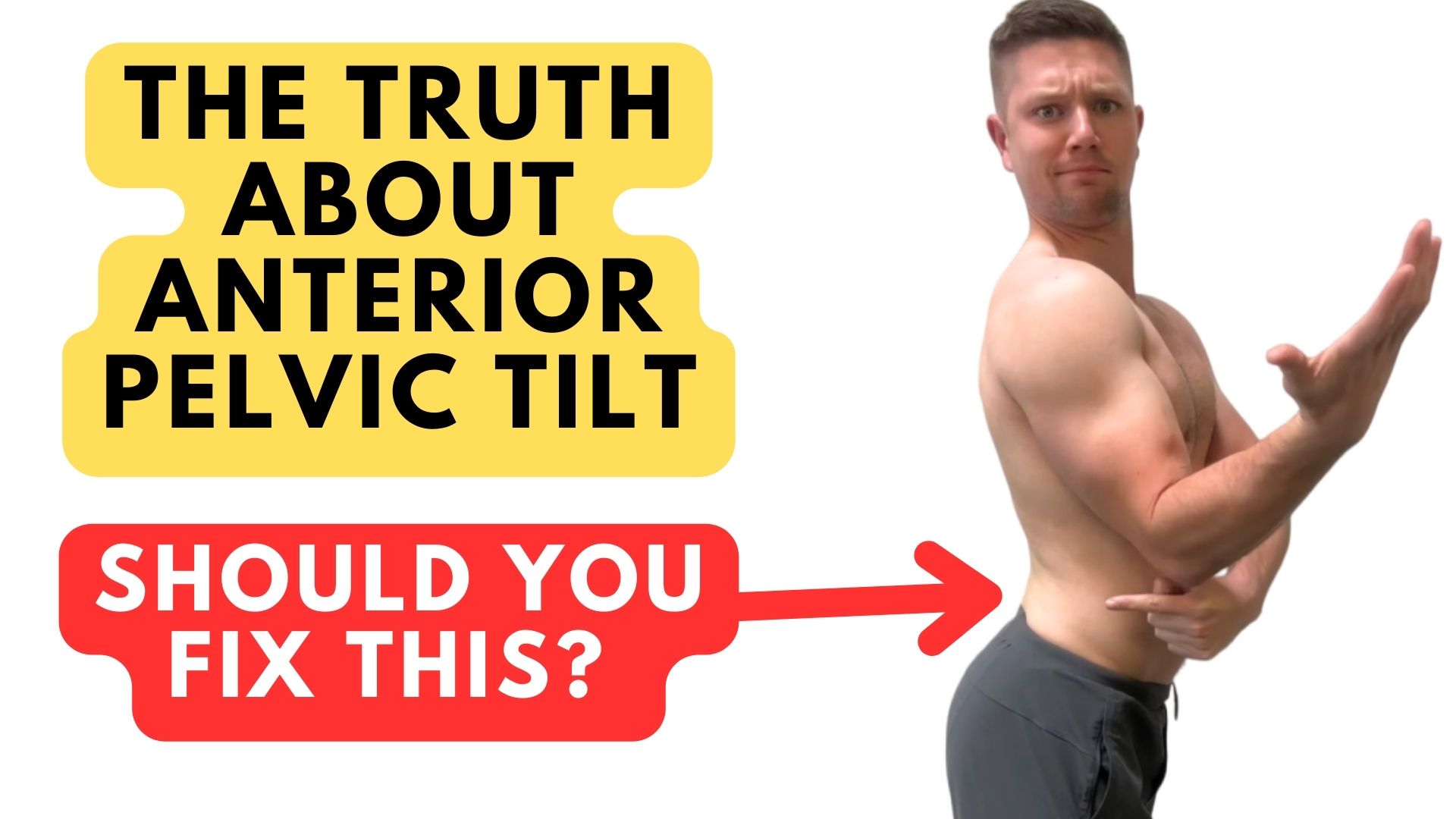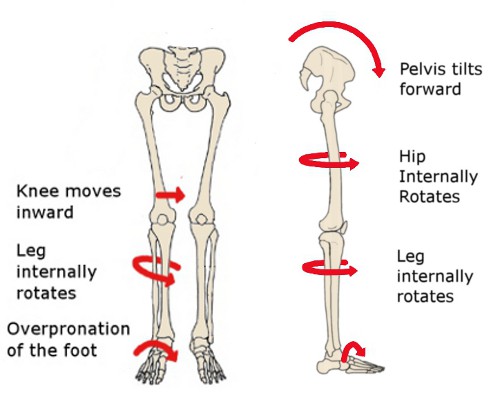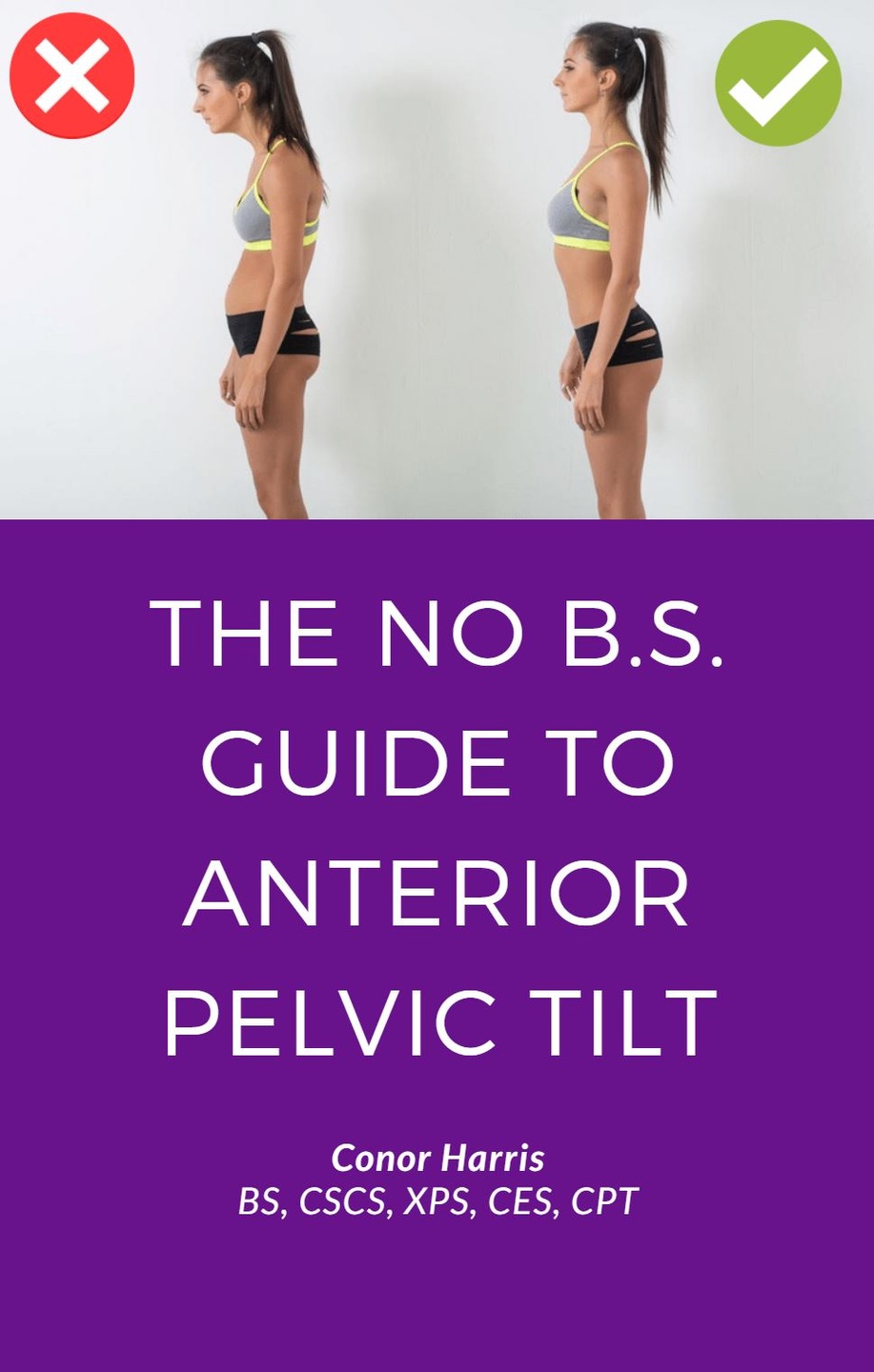Should You Try To Fix Your Anterior Pelvic Tilt?
May 05, 2023
Anterior pelvic tilt is a combative issue in the fitness and rehab industry.
Some think it's the root of all evil and pain.
Others think there's absolutely no way it can possibly influence how you feel.
As usual with two extremist viewpoints, the answer often lies somewhere in the middle.
In this article, I will discuss:
- Whether anterior pelvic tilt is a problem
- How to tell whether your anterior pelvic tilt is potentially problematic
- Solutions for anterior pelvic tilt
If you would rather watch than read, see below:
Is anterior pelvic tilt a problem that needs to be fixed?
There is a good bit of research that shows anterior pelvic tilt is not associated with pain of any kind:
- No consensus on causality of spine postures or physical exposure and low back pain: A systematic review of systematic reviews
- Comparing lumbo-pelvic kinematics in people with and without back pain: a systematic review and meta-analysis
Why is this? Well, it's probably because anterior pelvic tilt is extremely common. The overwhelming majority of people have it to some extent.
So the argument is: If it's so common, why would it be a problem?
Fair point, right?
Here is where I think that argument can miss something key:
Anterior pelvic tilt is going to limit movement options and range of motion at your pelvis.

It is going to bias you towards:
- More hip internal rotation
- A more forward center of mass pushed onto your forefoot
- More lumbar extension
Which is naturally going to limit:
- Hip external rotation
- The ability to get on your heels
- Flexion
In addition, the more forward your pelvis goes, the less hip internal rotation you're going to have available because at a certain point, you'll be so internally rotated that you can't get somewhere you're trying to go if you're already there.
We need to access hip rotation in so many different ways. In gait, running, squatting, swinging, etc.
If we can't find the necessary amount of hip rotation we need that the given task demands, then we have another strategy available: move through your lumbar spine.
This is what we refer to as "orientation" movement. Instead of your femurs rotating in the hip sockets, your spine will move to allow your femurs to push your femurs into the position the best they can:
I want to make it abundently clear that this is not inherently problematic. Because if it was, everyone would be in pain.
BUT - depending on so many different factors (lifestyle, training intensity, predisposition to injury, past injuries, etc), over time this can lead to undesired wear and overuse of certain muscles and joints as they continue to compensate for a lack of genuine hip rotation.
Interestingly, there are a few studies related to this:
- A lack of hip rotation, especially hip internal rotation, was correlated with low back pain
- A systematic review found low quality evidence that a lack of hip rotation was associated with low back pain, but hip internal rotation limitations did have some consistent relevance
- More limited hip internal rotation was consistently present in people with knee pain when walking
- People with femoral acetabular impingement (FAI) were more likely to have limited hip internal rotation
- A lack of hip internal rotation is associated with a greater risk of ACL tear in athletes
- A limitation in hip internal rotation was associated with increased prevelance of elbow and shoulder pain in baseball athletes
How to determine if your anterior pelvic tilt is problematic
Given that so many people have anterior pelvic tilt, how do you know yours it potentially related to your issues?
Well, for starters, you will have issues to begin with.
- Chronic pain
- Uncomfortable muscular tightness
- Mobility restrictions that limit you from doing what you want to do
Are all potential red flags.
I don't believe anterior pelvic tilt is a problem until it becomes one.
Let me give you an example. Imagine you had chronic knee pain that flares up more when you walk or exercise for extended periods of time.
If you want to know whether the problem is more localized at your knees or your hips have something to do with it, you can take some objective tests that will give you an idea of how much anterior pelvic tilt you are in and whether improving the position of your pelvis will give you relief of your issues.
Take these measurements:
- Straight Leg Raise
This will indicate how tight your hamstring are to a certain extent. If you can't get beyond about 60-70 degrees, chances are high your hamstrings are already in a lengthend, stretched out position and you can't further elongate them because they're at their end-range of stretch.
- Hip Flexion
If you can't get beyond about 100 degrees and feel a tightness and/or pinch at the front of your hips, chances are your pelvis is forward and preventing your femurs from rotating as they need to within your hip sockets.
- Hip Internal & External Rotation:
Ideal internal rotation is about 40 degrees, but it ultimately depends on the individual in terms of how much you will need to move pain-free. If you have a little bit of anterior tilt, you will probably have more internal than external rotation. However, remember that the more anterior pelvic tilt you have, the more limited this will be because you will be unable to further move into internal rotation.
Ideal external rotation is about 45 degrees, but it ultimately depends on the individual in terms of how much you will need to move pain-free. If your pelvis is forward, this will be limited.
The gist of this is that the more limited these measurements are, the more anterior pelvic tilt you have.
How to fix anterior pelvic tilt
Let's say you have pretty limited hip measurements. Will improving them and the position of your hips help solve your issues?
I say, why not try and find out? If you get noticeable, significant changes in these assessments and you feel better moving, then you are probably on to something.
If you get improvements and your issues don't improve at all, then it's more likely you need a different solution.
The solution to fix anterior pelvic tilt is to do exercises that:
- Recruit the hamstrings and obliques to pull the pelvis back
- Relax the low back muscles
- Help you find your heels more so you can shift your center of mass back
Here are three exercises I find work very well for improving anterior pelvic tilt and should make a difference in your assessments:
Keep in mind that gentle effort is always better. Most people have the misconception that more effort and force is better when trying to improve mobility and get themselves into new positions. This is not true because you are very likely to shove yourself too far, too fast into positions you can’t access. This is more likely to create an environment of “fight or flight” within your body. This is associated with a threat being present, and we absolutely do not want our body feeling unsafe moving into new positions.
This is the reason why my No B.S. Guide To Anterior Pelvic Tilt exists.

The goal isn't directly to fix your posture. The honest reason I have it out there is because I know for many, it can be related to movement restrictions and limitations. It may improve your posture, and that's great, but what I ultimately care about it you feeling better.
Don’t miss out on free education
Join our email list to receive exclusive content on how to feel & move better.

